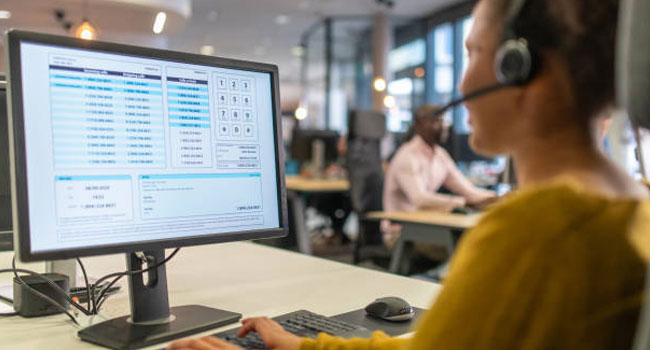The Rise of Desktop-as-a-Service: What Is It and Why Would You Need It?

The widespread adoption of cloud computing has added a lot of acronyms into our vocabulary, the most common of which are SaaS, PaaS, and IaaS. Indeed, the era has ushered in cloud solutions that deliver software, platform, and infrastructure to consumers and businesses on an on-demand, pay-as-you-go basis.
Now here’s an added cloud computing offering (and another acronym) that you may not be as familiar with but one that many organisations are already benefiting from: Desktop-as-a-Service or DaaS.
Desktop-as-a-Service: What it is and how it works

Desktop-as-a-Service or DaaS is a cloud service model wherein a third-party provider delivers virtual desktops to end-users via a cloud environment. The virtual apps and desktops are streamed to any device at any location, usually licensed on a per-user subscription.
You can think of DaaS as a hosted desktop — employees will have access to all their applications and services on their laptops and devices, but these apps are all running on the cloud-based servers of the IT provider instead of locally on the users’ computers.
This means that companies don’t have to concern themselves with the backend management of desktop infrastructure including data storage, security, backup, and maintenance upgrades because the service provider will be completely responsible for these.
DaaS lets your entire workforce get the same desktop experience regardless of device, and even when working outside of the office. All that end users would need is a device and an internet connection.
What’s the difference between DaaS and VDI?

A closely related remote access technology that’s also highly utilised by many enterprises is Virtual Desktop Infrastructure (VDI). Just like DaaS, VDI is a technology that allows organisations to remotely host and deploy virtual desktops to any endpoint device from a centralised server. The main difference is that VDIs are deployed from the company’s own on-premise data centers while DaaS cloud solutions are hosted by a cloud service provider.
VDI setups are mainly used by larger enterprises that have the resources to invest in the network, storage, and computing infrastructure, plus a skilled and talented IT team to manage it all. VDIs managed by in-house IT staff offer better security and more control over desktop offerings. However, for small and mid-sized businesses that don’t want to spend upfront on costly infrastructure and don’t have a full-scale IT team, DaaS solutions would be a more appropriate choice.
Top advantages of DaaS

Utilising a hosted desktop under a DaaS offering has several benefits over that of a traditional desktop environment and VDI, compelling many businesses to give it serious consideration. These advantages include:
-
Increased flexibility. With the changes in work practices under the new normal, enterprises are turning to DaaS solutions to accommodate a workforce that has primarily turned mobile. Employees can easily and securely access the tools they need using a hosted desktop, allowing them to be productive regardless of device and location.
-
Reduced security risks. Using DaaS solutions has minimised security concerns on having company data accessible on personal devices, or having employees’ devices lost or stolen. This is because applications and data are safely stored in the service provider’s cloud servers and thus, even if devices are compromised, there is minimal to no chance of malicious actors gaining access to confidential information through the lost or stolen devices.
-
Cost savings and cost management. Cloud solutions like DaaS lowers upfront capital expenditures and the cost of operating traditional desktops. The per-user based pricing allows your organisation to budget monthly expenses more accurately, and predict what workforce expansion will cost as far as IT needs are concerned. Plus, you can easily scale your desktop requirements up or down according to the volume of users at any given time.
-
Business continuity. A DaaS solution can easily be integrated into your business continuity and disaster recovery (BCDR) plan. In the event of any natural disaster, calamity, or a pandemic (as what is currently taking place) where staff cannot report to the office or company devices are rendered unusable, DaaS can give continued access to work applications from other devices so that employees can still be productive. DaaS also ensures that you have redundant backups that can be easily retrieved if the situation calls for it.
-
Easier management. Utilising DaaS means you are simplifying the management of desktops, laptops, and other endpoint devices because upgrade/maintenance tasks would now be performed by the third-party provider. Your in-house IT staff (if any) would no longer need to worry about rolling out new applications and implementing upgrades or security patches, significantly reducing their burden and giving them the time to focus on their core responsibilities.
Is DaaS fit for your business?

With the COVID19 pandemic upending many of the traditional working practices, DaaS gives businesses a more secure, efficient, and cost-effective way to provide employees with the applications and tools that they need anytime, anywhere. If this is what you’re looking for, then it’s time to look into DaaS solutions.
Related Posts
By accepting you will be accessing a service provided by a third-party external to https://www.htl.london/